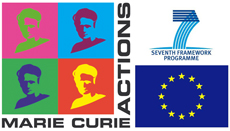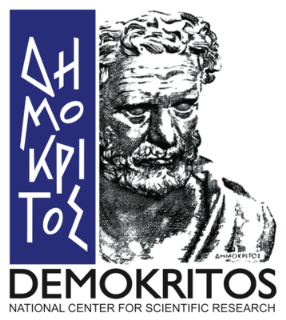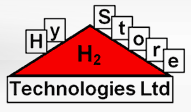Hydrogen Research
A. Present activities & status
Regarding H-storage, EREL is currently coordinating EC funded projects like the FP6 Integrated NESSHY and the FP6 STREP HYCONES while it has participated actively in STORHY (FP6-IP) and HYSTORY (FP5). The Laboratory has developed extended networking activities with many European and overseas groups specializing on various aspects of hydrogen storage. It has also acquired basic infrastructure (in both numerical and experimental terms) and facilities for H-storage studies in solids.
Regarding hydrogen safety, EREL has been involved in the EC funded projects: EIHP (FP5), EIHP2 (FP5), HYSAFE (FP6-NoE) as scientific coordinator of the InsHyde internal project, HyApproval (FP6-Strep) and HYPER (FP6-Strep). In the framework of the above and other programs, NCSRD has obtained considerable experience and know how on safety analysis of H2 applications, using the CFD methodology. NCSRD has already performed extensive safety analysis considering accidental hydrogen releases from private cars, buses, refuelling dispensers, refuelling trailer tanks, considering both LH2 and CGH2 storage systems at various pressures, CNG storage systems and different environments like garages, street canyons, tunnels and refuelling stations. As hydrogen safety expert, EREL has started efforts to extend its research services towards the private sector. In a recent contract with ERM-Hong Kong, EREL performed CFD simulations in the framework of a risk analysis for hydrogen busses in Hong Kong.
B. Research Vision and Associated Actions in atlas
The vision and major goal of future EREL research in the area of hydrogen technologies is summarized below.
H2 storage
In the case of H2 storage, EREL intends to pursue systematically and in a vertically integrated manner the development of improved solid state systems for stationary and portable and transport applications. The efforts should focus on two types of materials:
1- New solid state storage of hydrogen using metallic and complex hydrides: optimisation of systems – kinetics, cycling, thermal management, modelling;
Recently there has been a significant focus on novel light-weight complex hydrides because of the high gravimetric hydrogen storage capacities. However, the understanding of the hydrogenation/ dehydrogenation processes as well as of the effect of catalysts is very limited and should be addressed in the medium term. Study of model systems in a combinatorial approach is in this aspect essential. The combinatorial approach includes amongst others a series of novel experimental methods including in situ techniques as well as ab-initio modelling.
Promising materials should be upscaled to pilot tanks and storage systems addressing issues of cycling, heat management, costs, etc.
2- Solid state storage of hydrogen using porous materials: development of new materials based on carbon and metal-organic frameworks (MOF); development of hybrid organic/inorganic materials combining physi- and chemisorption;
The promise for more efficient nanoporous storage materials (in terms of amount stored at or close to ambient temperatures) seems to lie in metal doped carbons (taking advantage of the spillover mechanism), MOFs and other hybrid organic/inorganic materials aiming at interactions with hydrogen that are stronger than physisorption, yet weaker than chemisorption, so that the associated enthalpy, ΔH, remains in the area of 20-25 kJ/mol. If such efforts prove successful, the associated stakes are great from a practical point of view. Again promising materials should be upscaled to pilot tanks and storage systems addressing issues of cycling, heat management (if applicable), costs, etc.
It is clearly recognized at international level (e.g. US-DoE, NEDO-Japan, etc) that the topic of solid H-storage still requests major efforts on basic R&D aspects as crucial questions about mechanisms and processes are unresolved. An improved understanding of these processes is expected to contribute to a scientific breakthrough in the search for more efficient hydrogen storage materials, and give an answer concerning the feasibility of solid materials as a medium for H2 storage. On the other hand, if a successful solid storage system is developed then a major hurdle for the widespread use of hydrogen as energy carrier will have been removed. Therefore, it is very important for EREL to scale up its efforts and present research capabilities and potential in the area through the implementation of the Action Plan described in atlas.
Hydrogen safety
Regarding hydrogen safety studies, EREL intends to expand the applicability and validity of the models and CFD tools that are available to simulate industrial H2 safety applications (including EREL “in house” developments and commercial codes). However, several examples indicate that the predictions of such codes can exhibit significant variations and discrepancies even in “standard” and relatively simple cases. Reasons for this unacceptable spread in numerical predictions include the inadequate application of even well known and widely used numerical models, the utilisation of obsolete or generally restricted models, and quite frequently the application of models outside their validity range. Verification and validation procedures have been in general fragmented and non-systematic. Therefore, the necessity of accurate and rigorous guidelines for numerical model utilisation is apparent. Based on its present expertise, EREL intends to lead at a National and European level the efforts to eliminate such problems and to bring CFD simulation for H2 safety to a much higher level of quality and reliability.
In particular, EREL aims at taking the initiative to create a platform for the identification of appropriate computational tools and their ranges of applicability. One of the final objectives is to provide guidelines for the correct utilisation of the available CFD models and in that respect one should address research problems specific to hydrogen safety issues, e.g. the choice of turbulence models for hydrogen dispersion, the choice of combustion models for different explosion events, the choice of flow models suitable for large-scale complex geometries, etc. EREL wishes to organise an effective exchange of information concerning the models and the codes and will perform (in cooperation with appropriate expert groups) intensive Round Robin Testing (RRT) on a number of carefully selected cases. The overall effort will identify gaps and suggest the necessary experiments to obtain missing crucial data for the model and code validation. The vision is to obtain a collection of appropriately verified software tools for use by the scientific community and the regional, national and European authorities with specific guidelines as to their range of applicability and specific predictive features.
In particular, the strategic partnership to be formed under EREL leadership will review and analyse all (experimental and computational) data generated previously and will develop recommendations concerning the applicability of the various models and codes investigated under different conditions and environments. These recommendations will be proatlasy disseminated to scientists and stakeholders (industry, authorities, etc.), and feedback will be collected and integrated into a revised set of recommendations, an open database and a suite of validated simulation codes for use by the European scientific community.
C. Outreaching Activities
Such activities are essential for the enhancement of the research potential, the attainment of the research goals and the dissemination of the generated knowledge and enhanced capabilities at regional, national and worldwide levels. They include in broad terms:
- Increased networking and collaboration with expert groups, such as: IFE, Norway (synthesis and characterization of H-storage materials, group led by Prof. B. Hauback and Dr. J. Muller); SwRI, Texas, USA (officially appointed by DoE lab for standardisation of H-storage measurements, group led by Dr. M. Miller); JRC Inst. of Energy, Holland (European lab for H-storage measurements, group led by Dr. P. Moretto); Univ. of Crete, Greece (computational materials chemistry, group led by Prof. G. Froudakis); Univ. Southern California, USA (transport in porous structures, group led by Prof. Y. Yortsos)
- Two-way secondments, mobility of staff and samples between EREL and the above organisations
- Website upgrade, presentations and publications, public awareness activities at regional and national levels, etc.




